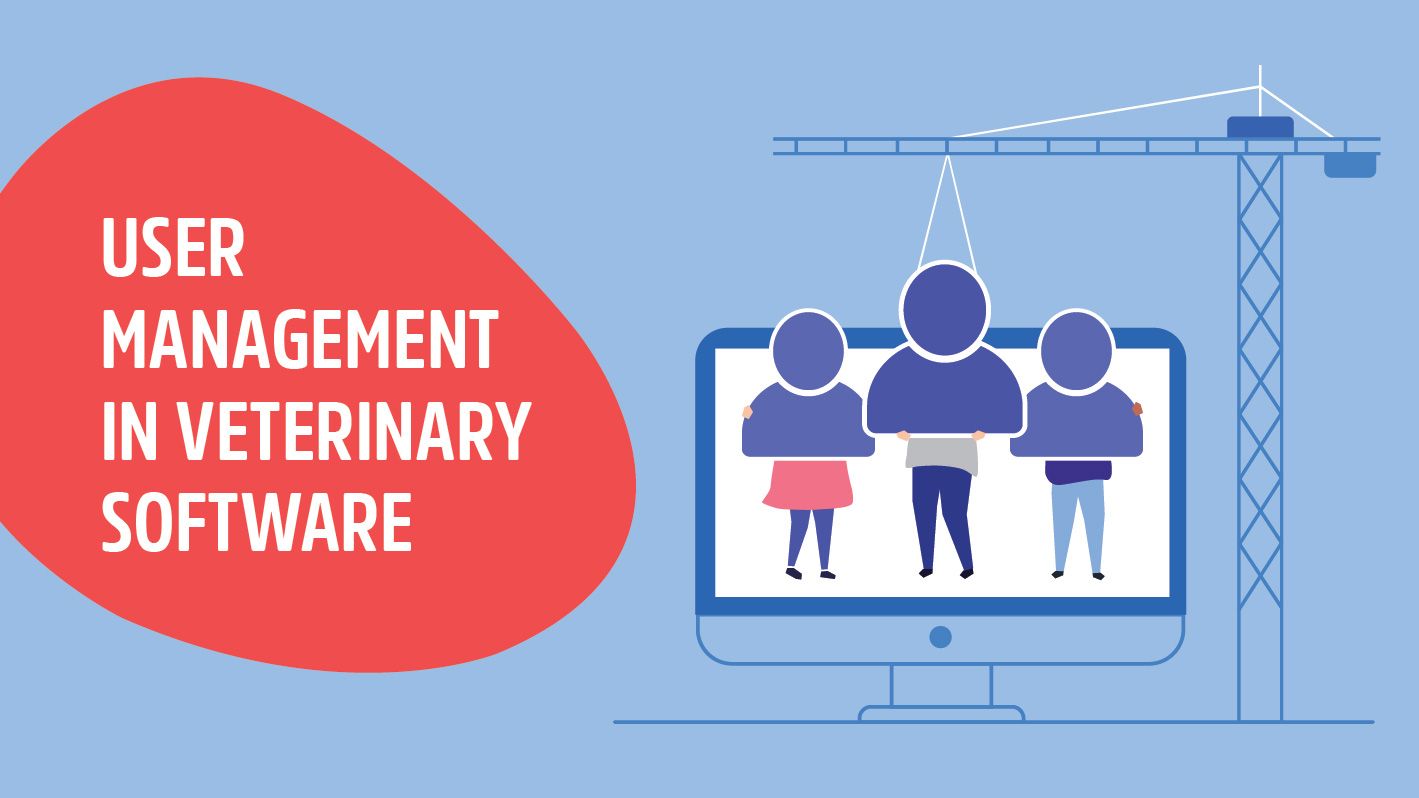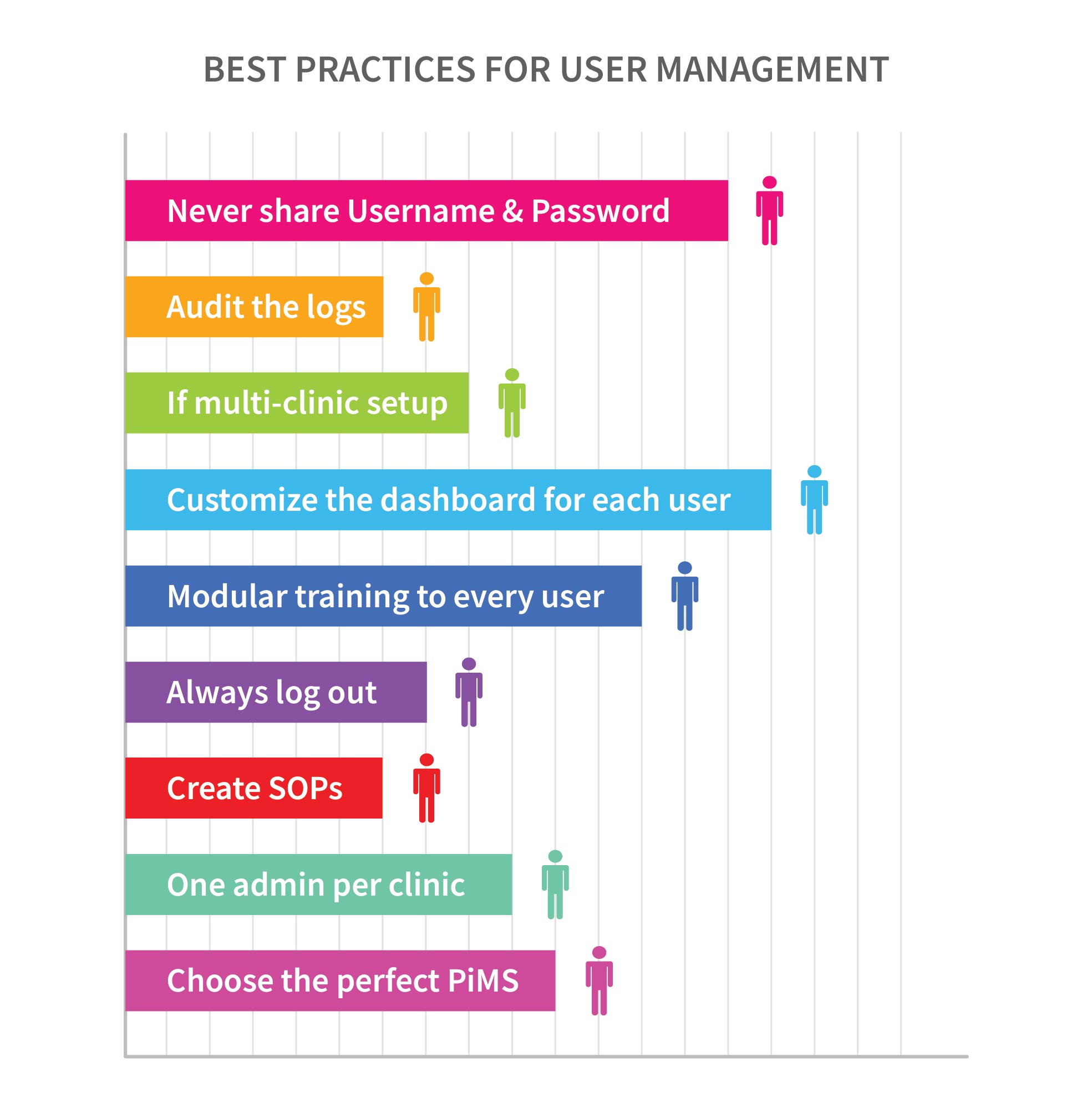
User management in a Veterinary Software
User management refers to the process of giving a certain level of access to a particular user of any software. In a veterinary setup, user management plays a crucial role. Why? Because the health records and other data is subject to manipulation if unauthorized access is given to any user. Last Friday we encountered a case where one of our clients complained about the unintended modification of the appointment calendar. When we checked the log, we found that one of the users of that clinic(the ambulance driver) was doing that just for fun. When we checked further, we found that the clinic had given ‘Provider’ level access to all its staff. That means, all the users have the power to create or edit the EMR and change the clinic level settings in the software. If similar things are happening in your veterinary software as well, then the clinic data is at risk. Hence, in this article, we bring to you the User Management fundamentals for a veterinary PIMS and will highlight a few best practices for the same.
How user management is done in a Veterinary Software
In a typical cloud-based vet software, the user login happens with username & password. Once the user logs in, he/she sees those modules only which are authorized for him/her. For example, if you are the receptionist, you will have access to Contacts, Appointments, Invoicing and Communication modules, but you will not have access to modules like Inventory, Analytics, Admin Setup, etc. The access level is set by the Administrator of the software while creating a user. There can be multiple Admins and one Super Admin in a typical vet software. Access levels are mostly defined by the designation of the staff. However, in VETport you can create custom user access levels irrespective of your staff’s designation. Want to give more authority to your senior staff with the same designation? It’s possible with VETport. Want to give restricted access to your newly joined practice manager? Also possible with VETport.
Best practices for user management

1. Never share Username & Password:
It is never recommended to share your login credentials to the PIMS with anyone. Advice your staff to keep confidentiality on the same and inform the administrator in case there is any breach. Strong policies must be implemented in the clinic so that such practices are not encouraged. Accountability must be at the core of user management.
2. Audit the logs:
Periodically check the activities of all your users. See if any user is accessing unauthorized modules or logging in from unauthorized devices/locations.
3. If multi-clinic setup:
User management becomes a complicated process if more than one clinics are being managed within a single cloud veterinary software. Why? Because the users log in from different locations. There is no direct communication between the users. Sometimes, by mistake users from clinic A modify the data of clinic B and vice versa. Also, more confusion happens when the same client visits both clinics A and B. VETport handles these complexities beautifully by giving intuitive access to data depending upon the circumstances.
4. Customize the dashboard for each user:
Most veterinary PIMS gives you the option to customize the dashboard for a particular user. Clinic administrators must help new users to configure the dashboard so that it will be easy to see the key information when they are logging in. For example, a Practice Manager must see the financial snapshot at the top of the dashboard. Similarly, the receptionist should see the appointment list on the top of her dashboard.
5. Modular training to every user:
Train each of your staff on the specific modules of the veterinary software that they are going to use. Take help from the software vendor if there is no trainer available. We at VETport are always proactive to train our clients and we never charge a dime for it.
6. Always log out:
It is common for receptionists to log in on the clinic’s front desk computer. Similarly, other staff of the clinic does login on other devices like Tablets or Macbooks which stay in the clinic all the time. It is a good practice to logout of those devices every time your shift ends.
7. Create SOPs:
Formulate the Standard Operating Procedures (SOPs) for users who are accessing the veterinary software on a day-to-day basis. Take help from your software vendor who might have a readymade SOP for you. Clearly chart out Dos and Don’ts for each user category.
8. One admin per clinic
It is a good practice to have only one admin for a clinic who would have complete access to the software. Having multiple admins will create chaos in the system and it will create further problems for your software vendor while configuring things. In case of multi clinics, one super admin and one admin for every clinic would be the perfect model.
9. Choose the perfect PiMS
Finally, it is crucial to choose the right practice management software which supports all the best practices of user management. VETport is loaded with user management features like default user groups, custom user groups, access level based on designation, page-level access definition, etc. Also, VETport collects detailed information like Physical Address, Phone number, Social Security number, and Signature of every user so that clinic is legally covered while creating new users.

